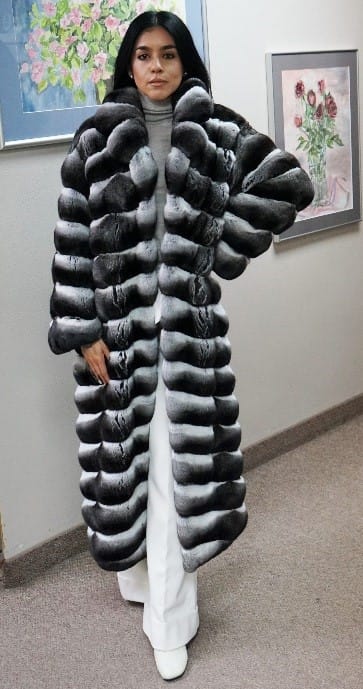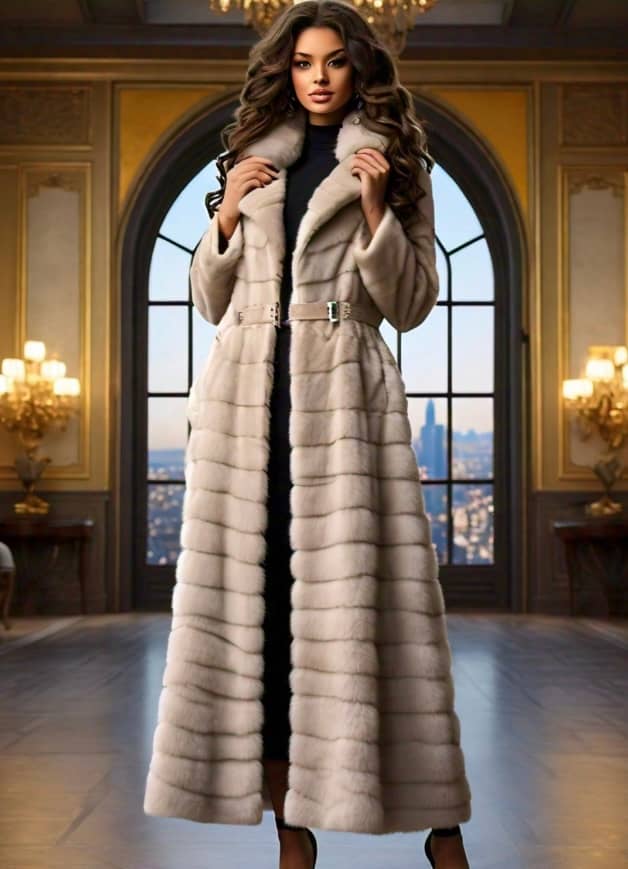What is the Warmest Fur Coat
What is the Warmest Fur Coat? The warmest fur depends on several factors, including the type of fur used, the thickness of the pelt, the density of the fur.
The warmest fur depends on several factors, including the type of fur used, the thickness of the pelt, the density of the fur, and the construction of the coat itself. Some of the warmest furs include Canadian lynx, Russian sable, chinchilla, and red fox.

Canadian lynx fur is considered one of the warmest and softest furs available, with a density of around 25,000 hairs per square inch. The fur is also quite thick, with long, soft guard hairs that trap air close to the body, providing excellent insulation.
Russian sable fur is also very warm, with a density of around 40,000 hairs per square inch. It is typically made from the belly fur of the animal, which is the softest and most desirable part of the pelt.
Chinchilla fur is one of the softest and most luxurious furs available, with a density of around 60,000 hairs per square inch. It is quite warm, with a thick, dense pelt that traps air close to the body.

Red fox fur is one of the warmest and most durable furs available, with a density of around 20,000 hairs per square inch. The fur is also quite thick, with long, soft guard hairs that provide excellent insulation.
It is important to note that fur coats are typically very warm and are designed to provide insulation against cold weather. However, there are many alternatives to fur that are just as warm and comfortable, such as synthetic or faux fur, down, and other materials. These options are often more affordable and do not involve the use of animal products, making them a popular choice for many consumers.
The coldest temperature at which a fur coat can be worn depends on several factors, including the type of fur used, the thickness of the pelt, the density of the fur, and the construction of the coat itself, as well as the individual’s tolerance to cold.
Fur coats are designed to provide insulation and warmth, so they are typically well-suited for cold weather. However, it is important to note that different types of fur have varying degrees of warmth and insulation, and some furs may be more suitable for extremely cold temperatures than others.

For example, a fur coat made from a thick, dense pelt such as chinchilla or Canadian lynx may be more suitable for extremely cold temperatures than a coat made from a lighter-weight fur such as rabbit or mink. Similarly, a coat with a high collar and a hood may provide more protection against the cold than a coat with a lower collar.
Generally speaking, fur coats can be worn in very cold temperatures, such as those found in Arctic or subarctic regions. However, it is important to dress in layers and to take other precautions to stay warm and safe in extreme cold, such as wearing insulated boots, gloves, and hats, and avoiding prolonged exposure to the cold.
For example, a high-quality fur coat made from Canadian lynx, Russian sable, chinchilla, or red fox can provide warmth and comfort in temperatures as low as -40 degrees Fahrenheit or even colder. However, it is important to note that the temperature rating of a fur coat also depends on individual preferences, body type, and activity level.


In extremely cold temperatures, it is important to wear additional layers of clothing and accessories such as gloves, hats, and scarves to provide extra insulation and protection. It is also important to take breaks and warm up indoors frequently to prevent hypothermia and other cold-related health issues.
Additionally, it is important to note that fur coats are not suitable for all climates and situations. They are typically heavy and bulky, making them uncomfortable to wear in milder temperatures or in situations where a lot of physical activity is involved. In such cases, lighter and more breathable materials such as down or synthetic insulation may be more appropriate.
